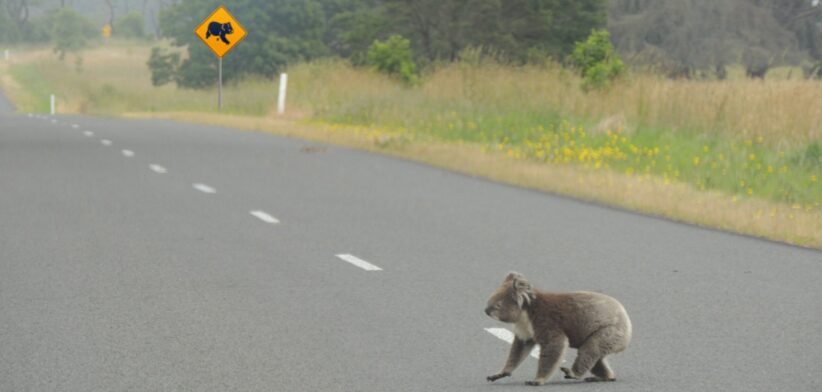Almost three koalas a week are killed on a 50km stretch to road in Central Queensland, elevating the risk to the region’s already endangered population.
Researchers from CQUniversity and Griffith University have released findings from two separate studies focused on a stretch of the Peak Downs Highway, between Mackay and Nebo in Queensland.
Lead researcher, CQUniversity’s Dr Rolf Schlagloth, said over the 51km section of highway, 145 koalas were struck by vehicles in 2023, up to the end of November, with 83 percent dying as a result.
Dr Schlagloth said in comparison, 365 koalas in the entire South East Queensland region were sent into care due to vehicle collision each year.
“There are horrendous numbers of koalas getting hit and killed by vehicles every year on this relatively short stretch of road, with no reduction in sight,” he said.
Dr Schlagloth said Koala Research-CQ and its collaborators had analysed koala roadkill data spanning nearly a decade.
“We’ve found that because of the amount and the mostly uniform distribution of good quality habitat, koalas are unfortunately killed nearly anywhere along this highway.
“Driver visibility is also a contributing factor. We know that the better or greater the visibility a driver has, the less likely it is for a koala vehicle collision to occur.”
Griffith University researcher Dr Douglas Kerlin said governments needed to step in to protect this koala population.
Dr Kerlin said koalas were listed as endangered in Queensland, but current policies were focused on populations in South-East Queensland, while koalas in places like Central Queensland were largely ignored.
He said separating koalas and vehicles was difficult on the existing highway, but researchers believed future avoidance of high-quality koala habitat for highway infrastructure, in addition to constructing or retrofitting protective or diversionary infrastructure could help reduce roadkill.
Dr Schlagloth said initial attempts to separate traffic and wildlife via retrofitted bridges were yet to bring good news.
“We have monitored three bridges that had been retrofitted with short sections of wildlife exclusion/diversion fencing to encourage koalas (and other wildlife) to pass underneath the road rather than taking the risk of crossing the road proper,” Dr Schlagloth said.
“While rare usage of other, similar structures by koalas has been reported, unfortunately, despite monitoring these underpasses, we have not found any evidence of koalas having used them to get to the other side of the road, while we do have evidence of koalas having crossed the highway successfully and unsuccessfully near those underpasses.”








